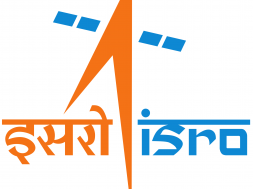
Reliance Expected To Generate Rs 1.2 Lakh Crore Revenues From This New Business! – EQ Mag
Reliance Industries, led by billionaire Mukesh Ambani, is projected to generate USD 10-15 billion in revenue from its new energy business, including solar and hydrogen, by 2030. However, the company will need to seek acquisitions or partnerships to compensate for its limited technological expertise, according to a report by Sanford C Bernstein.
Reliance plans to invest USD 2 trillion in clean energy, primarily in solar, battery, electrolyzers, and fuel cells, in India by 2050. India has set ambitious targets for solar capacity and green hydrogen production. Reliance aims to capture significant portions of these markets. The company is shifting away from fossil fuels and has committed to becoming a net-zero carbon emission company by 2035, surpassing other energy companies in the region.
Reliance is developing a comprehensive renewable energy ecosystem involving solar, batteries, and hydrogen to meet the requirements of India’s green energy revolution. While Reliance possesses the financial resources and industry connections, the report highlights the need for improved technology and manufacturing capabilities for success. Funding is not a concern for Reliance, given its strong financial position and positive cash flow outlook.
The Indian government has set a goal of 500GW of installed renewable energy capacity by 2030, with solar accounting for the largest portion at 280GW. India currently has 65GW of solar power as of February 2023. To accommodate intermittent renewable energy sources such as wind and solar, India is projected to require 88GWh of cumulative energy storage system (ESS) capacity by 2030, representing 7% of the installed solar and wind capacity. By 2050, ESS capacity is expected to reach 15% of the total installed wind and solar capacity. Regarding transportation, the Indian government aims for 30% electric vehicle (EV) sales penetration for private cars, 70% for commercial vehicles, and 80% for two and three-wheelers by 2030. However, the report suggests that achieving these targets may take longer due to the lack of charging infrastructure, affordable EV options, and an established battery supply chain.
Reliance is developing a comprehensive renewable energy ecosystem involving solar, batteries, and hydrogen to meet the requirements of India’s green energy revolution. While Reliance possesses the financial resources and industry connections, the report highlights the need for improved technology and manufacturing capabilities for success. Funding is not a concern for Reliance, given its strong financial position and positive cash flow outlook.
The Indian government has set a goal of 500GW of installed renewable energy capacity by 2030, with solar accounting for the largest portion at 280GW. India currently has 65GW of solar power as of February 2023. To accommodate intermittent renewable energy sources such as wind and solar, India is projected to require 88GWh of cumulative energy storage system (ESS) capacity by 2030, representing 7% of the installed solar and wind capacity. By 2050, ESS capacity is expected to reach 15% of the total installed wind and solar capacity. Regarding transportation, the Indian government aims for 30% electric vehicle (EV) sales penetration for private cars, 70% for commercial vehicles, and 80% for two and three-wheelers by 2030. However, the report suggests that achieving these targets may take longer due to the lack of charging infrastructure, affordable EV options, and an established battery supply chain.
















